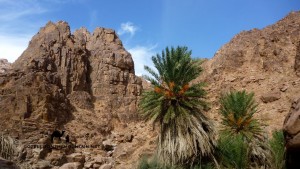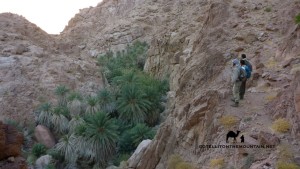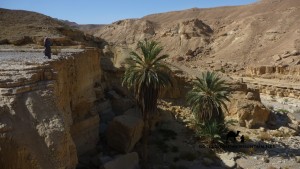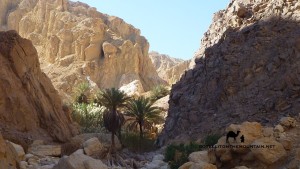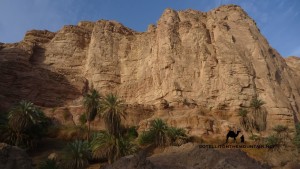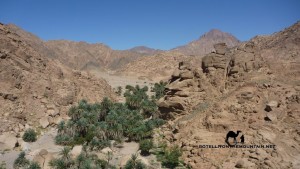July 20, 2015
Old ways to St Katherine
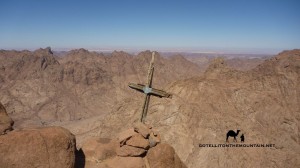 Stand by the Monastery of St Katherine today and look around – swivelling through the full 360 degrees – and you’ll see high mountains locking you in on every side. Leave the monastery behind and venture up these mountains, heading for the very highest tops, and another – even more spectacular – view unfolds. A vast desert wilderness stretches out all around you, merging into the haze of faraway horizons. Sometimes, you can even see the high places of Africa and Asia. It’s a view that gives a sense of the Sinai’s epic isolation – the great no man’s land between continents – and of the Monastery of St Katherine; which stands in the most isolated part of the Sinai itself. Visiting the monastery today is easy – you can drive right up to its front gate – but getting here once required a long, gruelling camel expedition through remote stretches of wilderness.
Stand by the Monastery of St Katherine today and look around – swivelling through the full 360 degrees – and you’ll see high mountains locking you in on every side. Leave the monastery behind and venture up these mountains, heading for the very highest tops, and another – even more spectacular – view unfolds. A vast desert wilderness stretches out all around you, merging into the haze of faraway horizons. Sometimes, you can even see the high places of Africa and Asia. It’s a view that gives a sense of the Sinai’s epic isolation – the great no man’s land between continents – and of the Monastery of St Katherine; which stands in the most isolated part of the Sinai itself. Visiting the monastery today is easy – you can drive right up to its front gate – but getting here once required a long, gruelling camel expedition through remote stretches of wilderness.
The monastery might have been isolated, but it was still accessible. Travelling routes converged on it from all sides; some from Cairo, others from El Tur – an important port – and others from Jerusalem. Pilgrims, traders, travellers, warriors and poets all followed these ways before. And you can do exactly the same today.
Here are my five favourites – the best hiking routes to St Katherine.
 1. WADI ISLEH One of three big wadis that cut through the gigantic chain of mountains that run down the Sinai’s west coast. It’s spectacular from the start – a canyon whose walls rise vertically to the sky. Waterfalls gush and palm trees stand buried to their heads by the sediments of old floods. This was the way from the old port of El Tur – (today’s capital of South Sinai) – and the main route upon which supplies reached the monastery. It became important after the Islamic Conquest, when other routes became difficult. It takes 3-5 days and is best done in spring, so you see the waterfalls at their fullest. Water in the desert always has a magic about it.
1. WADI ISLEH One of three big wadis that cut through the gigantic chain of mountains that run down the Sinai’s west coast. It’s spectacular from the start – a canyon whose walls rise vertically to the sky. Waterfalls gush and palm trees stand buried to their heads by the sediments of old floods. This was the way from the old port of El Tur – (today’s capital of South Sinai) – and the main route upon which supplies reached the monastery. It became important after the Islamic Conquest, when other routes became difficult. It takes 3-5 days and is best done in spring, so you see the waterfalls at their fullest. Water in the desert always has a magic about it.
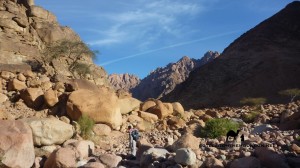 2. WADI MIR This gives an alternative way through the massive chain of mountains on the west coast. You soon get to a junction in the wadi where two routes diverge. One goes to Wadi Sig – my favourite wadi in the Sinai – whilst the other crosses a high pass known as Naqb Umm Seikha. This was the fastest, most direct route and as such the one along which post travelled to St Katherine (it was called Darb el Bosta – The Post Road). It’s another way in from El Tur – and to save your energy, you can even get a jeep a few kilos up the wadi. It takes 3-5 days to St Katherine but – be warned – it’s tougher than Wadi Isleh.
2. WADI MIR This gives an alternative way through the massive chain of mountains on the west coast. You soon get to a junction in the wadi where two routes diverge. One goes to Wadi Sig – my favourite wadi in the Sinai – whilst the other crosses a high pass known as Naqb Umm Seikha. This was the fastest, most direct route and as such the one along which post travelled to St Katherine (it was called Darb el Bosta – The Post Road). It’s another way in from El Tur – and to save your energy, you can even get a jeep a few kilos up the wadi. It takes 3-5 days to St Katherine but – be warned – it’s tougher than Wadi Isleh.
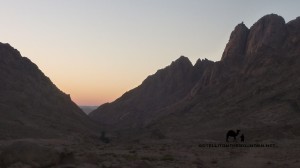 3. WADI HEBRAN The third of the big three wadis cutting into the Sinai’s huge western chain of mountains. It’s full of greenery and was the wadi through which Abbas Pasha – an old ruler of Egypt – planned a road to St Katherine. Today, talk of making a new modern road has resurfaced, which is all the more reason to walk it now. You have two options: you can exit the wadi on a route that connects to the old pilgrim route of Naqb el Hawa: Pass of the Winds. Alternatively, you can continue to Wadi Kabrin – a beautiful red rock wadi with Christian graffiti and hermit cells. Either way, give it 3-5 days start to finish.
3. WADI HEBRAN The third of the big three wadis cutting into the Sinai’s huge western chain of mountains. It’s full of greenery and was the wadi through which Abbas Pasha – an old ruler of Egypt – planned a road to St Katherine. Today, talk of making a new modern road has resurfaced, which is all the more reason to walk it now. You have two options: you can exit the wadi on a route that connects to the old pilgrim route of Naqb el Hawa: Pass of the Winds. Alternatively, you can continue to Wadi Kabrin – a beautiful red rock wadi with Christian graffiti and hermit cells. Either way, give it 3-5 days start to finish.
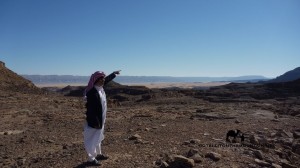 4. DARB MUSA – the ‘Way of Moses‘. This is the legendary way to the Monastery of St Katherine from Suez, re-tracing the way it’s said Moses escaped the Pharaoh Ramses. It was the major route upon which travellers walked to the Monastery of St Katherine in times past and is recorded in several early guidebooks. Travellers would visit ‘Stations of the Exodus’ on the way – where it’s said Biblical stuff happened. Today, it’s best not to start in Suez; but in Wadi Gharandal, where Wadi Wutah gives a beautiful passage through the Wilderness of the Wanderings to Wadi Feiran and St Katherine. Give it 7-10 days all the way.
4. DARB MUSA – the ‘Way of Moses‘. This is the legendary way to the Monastery of St Katherine from Suez, re-tracing the way it’s said Moses escaped the Pharaoh Ramses. It was the major route upon which travellers walked to the Monastery of St Katherine in times past and is recorded in several early guidebooks. Travellers would visit ‘Stations of the Exodus’ on the way – where it’s said Biblical stuff happened. Today, it’s best not to start in Suez; but in Wadi Gharandal, where Wadi Wutah gives a beautiful passage through the Wilderness of the Wanderings to Wadi Feiran and St Katherine. Give it 7-10 days all the way.
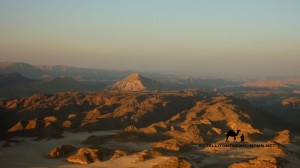 5. THE JERUSALEM ROUTE The route carried a steady flow of pilgrim traffic – connecting two major Christian sites in the Middle East. It entered the Sinai from the Negeb – the Sinai’s Bedouin sisterland to the north – and ran into Wadi Watir (which has a tarmac road today – but which is still beautiful). There were two routes into Wadi Watir – one down the coast from Taba – and another from further north. Thereafter the main route passed Ein Hudera; a green oasis with pilgrim graffiti. Today, a variation on this route is being re-made as the Abraham Path and will soon be ready. Give it 10-12 days to walk the whole thing end to end.
5. THE JERUSALEM ROUTE The route carried a steady flow of pilgrim traffic – connecting two major Christian sites in the Middle East. It entered the Sinai from the Negeb – the Sinai’s Bedouin sisterland to the north – and ran into Wadi Watir (which has a tarmac road today – but which is still beautiful). There were two routes into Wadi Watir – one down the coast from Taba – and another from further north. Thereafter the main route passed Ein Hudera; a green oasis with pilgrim graffiti. Today, a variation on this route is being re-made as the Abraham Path and will soon be ready. Give it 10-12 days to walk the whole thing end to end.
Remember all of these routes are walkable but they go through remote, isolated stretches of wilderness where help can be a long time coming if needed – so a good, experienced Bedouin guide is key to success. Going with the Bedouin is the smart move and it will add a whole new dimension to your trip. You won’t just get to know the way – you’ll really understand the desert and how to survive it. As well as a guide you’ll need to take a jeep to the beginning of most of the routes marked here. For the first three wadis the best place to start from is El Tur. For the fourth, you’ll need to get the jeep to Wadi Gharandal. Check out the best guides and jeep drivers in my Directory of the Best. Most of them will know the routes here and if they don’t they should be able to link you up with other trusted guides who will.
